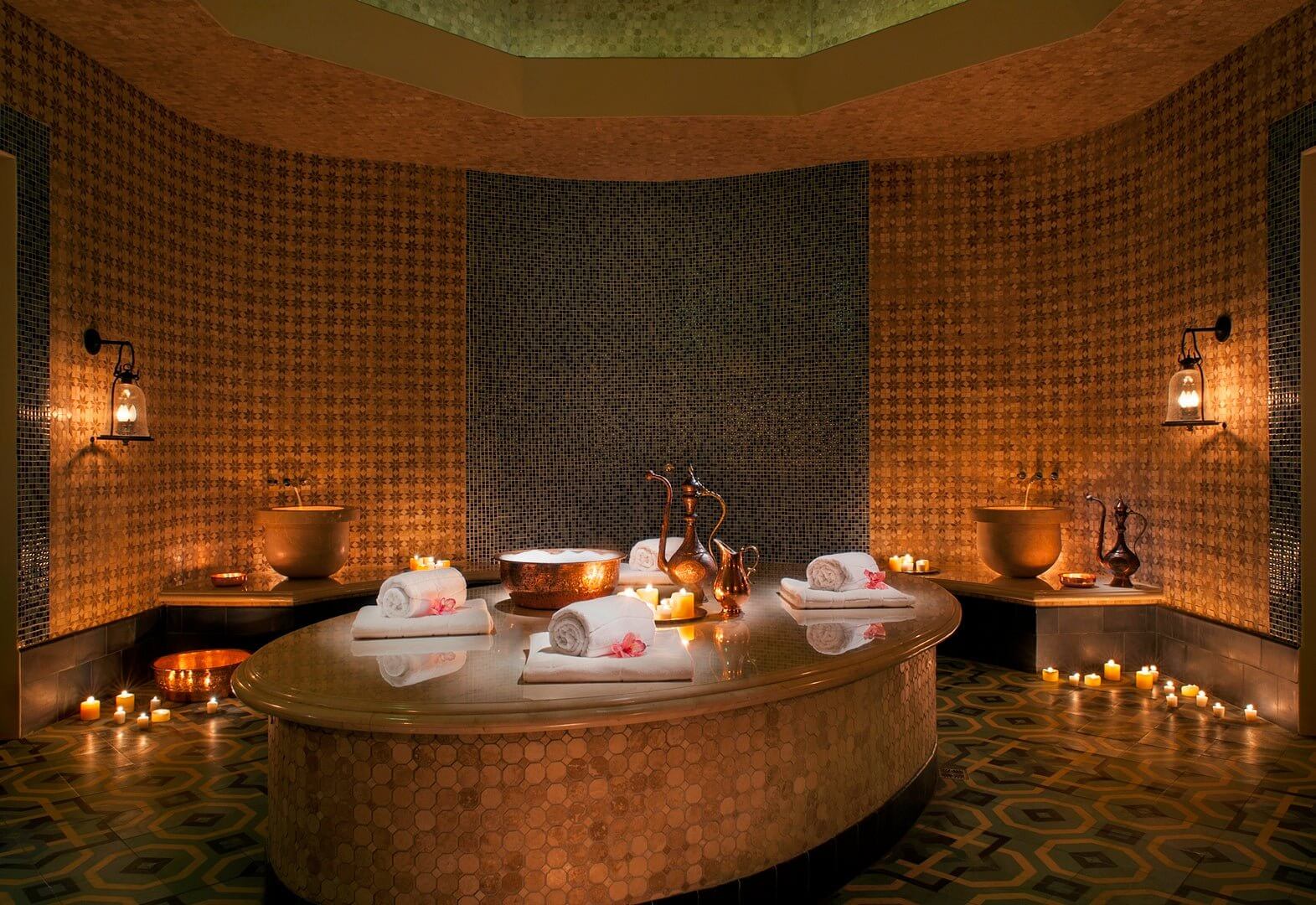The Hammam: Tradition and Spa Products in Morocco
Outline
🛁 History and Importance of Hammam
The hammam has its origins in the public baths of the Roman and Byzantine Empires, but it was adopted and adapted by Arab and Muslim cultures, becoming an integral part of daily life in Morocco. Traditionally, hammams were located near mosques, allowing worshipers to purify themselves before prayers. Today, although modern hammams have evolved, they remain a place of purification, relaxation and socialization.
🌀 The Steps of the Hammam Ritual
The Moroccan hammam ritual consists of several steps, each playing a specific role in cleansing and revitalizing the skin. The products used during this ritual are made from natural ingredients and are designed to offer a unique sensory and therapeutic experience.
Preparation and Relaxation
The ritual begins with a moment of relaxation in a warm, humid room. The heat and steam help open the pores of the skin, facilitating the elimination of toxins and impurities. This step also prepares the skin for the following treatments.
Application of Black Soap
Black soap, or "beldi soap", is a key element of the hammam ritual. Made from crushed black olives and olive oil, this pasty soap rich in vitamin E has exfoliating and moisturizing properties. Black soap is applied all over the body and left on for a few minutes to allow the ingredients to penetrate the skin.
Exfoliation with the Kessa Glove
After applying the black soap, the scrub begins using a kessa glove, a rough horsehair glove. The scrub helps remove dead skin cells, stimulating blood circulation and leaving the skin soft and smooth. This deep exfoliation is one of the distinctive features of the hammam ritual.
Rinse and Mask with Ghassoul
Ghassoul, a mineral clay harvested in the Atlas Mountains, is used as a body mask. Mixed with rose water or other hydrosols, ghassoul purifies the skin, absorbs excess sebum and provides essential minerals. After applying the mask, the body is rinsed with lukewarm water.
Hydration and Massage
The final step of the ritual is to hydrate and nourish the skin. Natural oils, such as argan oil or prickly pear oil, are massaged into the skin to deeply nourish and protect it. This relaxing massage concludes the ritual, leaving the skin radiant and revitalized.
🌿 Creation of Traditional Spa Products
The creation of traditional spa products in Morocco is based on the use of natural and local ingredients, known for their beneficial properties for the skin. Here are some of the key products used in the hammam ritual and their manufacturing process.
- Black Soap: Black soap is made from crushed black olives and olive oil. The olives are first macerated in salt and potash before being crushed to obtain a thick paste. This paste is then mixed with olive oil to create black soap. The final product is rich in vitamin E and has exceptional exfoliating and moisturizing properties.
- Ghassoul: Ghassoul is a unique mineral clay, extracted from the Atlas Mountains. After extraction, the clay is dried in the sun and then ground into a fine powder. Before use, this powder is mixed with water or hydrosols to create a paste applied to the skin. Ghassoul is valued for its absorbent and purifying properties.
- Argan Oil: Argan oil, often called “liquid gold,” is extracted from the kernels of the argan tree, a tree endemic to Morocco. The production process for argan oil is long and laborious. The kernels are first harvested and dried, then the almonds are extracted and cold-pressed to obtain the oil. Argan oil is rich in essential fatty acids and vitamin E, offering moisturizing, nourishing, and anti-aging properties.
- Rose Water: Rose water is produced by distilling rose petals. The petals are hand-picked and distilled to extract the essential oil and hydrosol. Rose water is used for its soothing, toning and refreshing properties.
🌍 The Importance of Sustainability and Ethics
The creation of traditional spa products in Morocco is closely linked to sustainable and ethical practices. Ingredients are often grown organically and hand-harvested by local cooperatives. These cooperatives play a crucial role in preserving traditional production methods and economically supporting rural communities.
By choosing traditional Moroccan spa products, consumers not only support environmentally friendly practices, but also local social and economic initiatives.
🔚 Conclusion
The hammam ritual is more than just a beauty treatment; it is a rich cultural tradition and a holistic wellness experience. The creation of traditional spa products in Morocco, such as black soap, ghassoul, argan oil, and rose water, helps to perpetuate this tradition by offering natural and effective skin care. By incorporating these products into your skincare routine, you can benefit from the benefits of these ancestral ingredients while supporting sustainable and ethical practices.
At Botanicalex, our cosmetic laboratory in Morocco is committed to producing high-quality spa products using local and natural ingredients. Contact us to discover our range of products and live the authentic Moroccan hammam experience.



